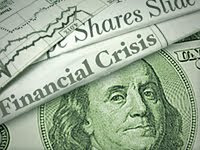Finally, S&P found about the California and US Corp., for the Chinese it is already the old news - they are selling US Treasuries and buying Japan and Korean Bonds instead. Small change goes into the Copper, Zinc, Potash and Lithium along the way.
Now we have another catalyst for the Gold price, which is silently moving to the all-time-high again.
This chart above looks very nasty - Gold smells this trouble - what will happen with the price of goods with unlimited supply? Economy gives no other choice than to Inflate pumping the liquidity by QE, and the US Dollar will be among the casualties.
"4. First Gold will make new all-time high, second will be M&A play: Majors will shop for Juniors with resources in the ground. Here is the double-game - Gold is moving up and Majors' production and Reserve Base is going down. If you like more leverage you are welcome to Silver market. Place to be is in stories will strong management, growing resources and stable political situations. Markets will be volatile by all means and political tensions will be driving this Gold Bull as well."
CNBC:
Published: Thursday, 26 Aug 2010
By: Reuters
The United States government needs to take steps to preserve its top AAA-rating, a Standard & Poor's Ratings (S&P) official told Dow Jones newswire in an interview published on Thursday.
The measures taken in response to recommendations President Barack Obama's commission on fiscal responsibility would be crucial in the view S&P takes on the U.S. credit rating, he said.
"It is very important for the credit standing of the United States that the Congress considers very carefully what the fiscal commission proposes," John Chambers, chairman of S&P's sovereign rating committee, was quoted as saying.
"It is very important for Congress to take the required steps."
S&P maintains the United States' top AAA rating with a stable outlook, meaning there is not a significant chance of a change in the near future.
However, it has repeatedly warned about the gigantic deficit and the debt burden in the world's biggest economy, calling it a challenge for the government.
David Beers, S&P's global head of sovereign ratings said in a July report the U.S. does not have unlimited fiscal flexibility and the best-case scenario for the U.S. would be for its debt-GDP ratio to peak at around 80 percent, although there was a chance it could exceed 100 percent.
"So we don't think these political decisions on tackling the public finances can be put off forever," Beers said in the report.
Chambers also disagreed with Ireland's criticism of its downgrade in the Dow Jones interview.
Chambers said S&P does not consider the bad loans the government's asset management agency is buying from banks as liquid assets in the near term, but added further rating action was unlikely in the near term.
On Tuesday, S&P cut Ireland's long-term rating by one notch to 'AA-', the fourth highest investment grade, and assigned the country a negative outlook saying the cost to the government of supporting the financial sector had increased significantly.
That drew criticism from the National Treasury Management Agency which said it disagreed with S&P's view that Ireland faced substantially higher costs to bail out its ailing banking sector.
"In terms of the specific analysis by S&P, this is largely predicated upon an extreme estimate of bank recapitalization costs of up to 50 billion euros," the NTMA said. "We believe this approach is flawed."




No comments:
Post a Comment